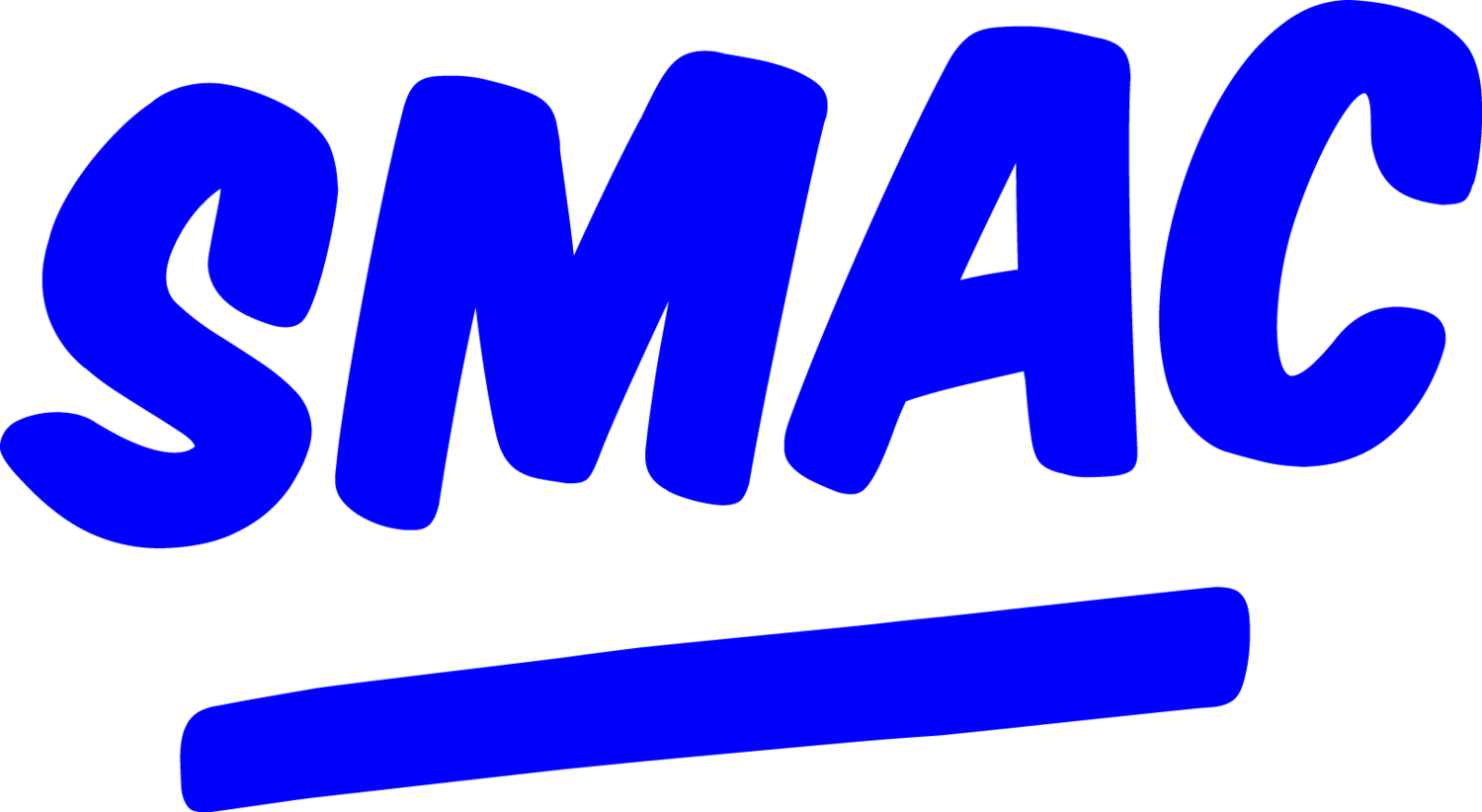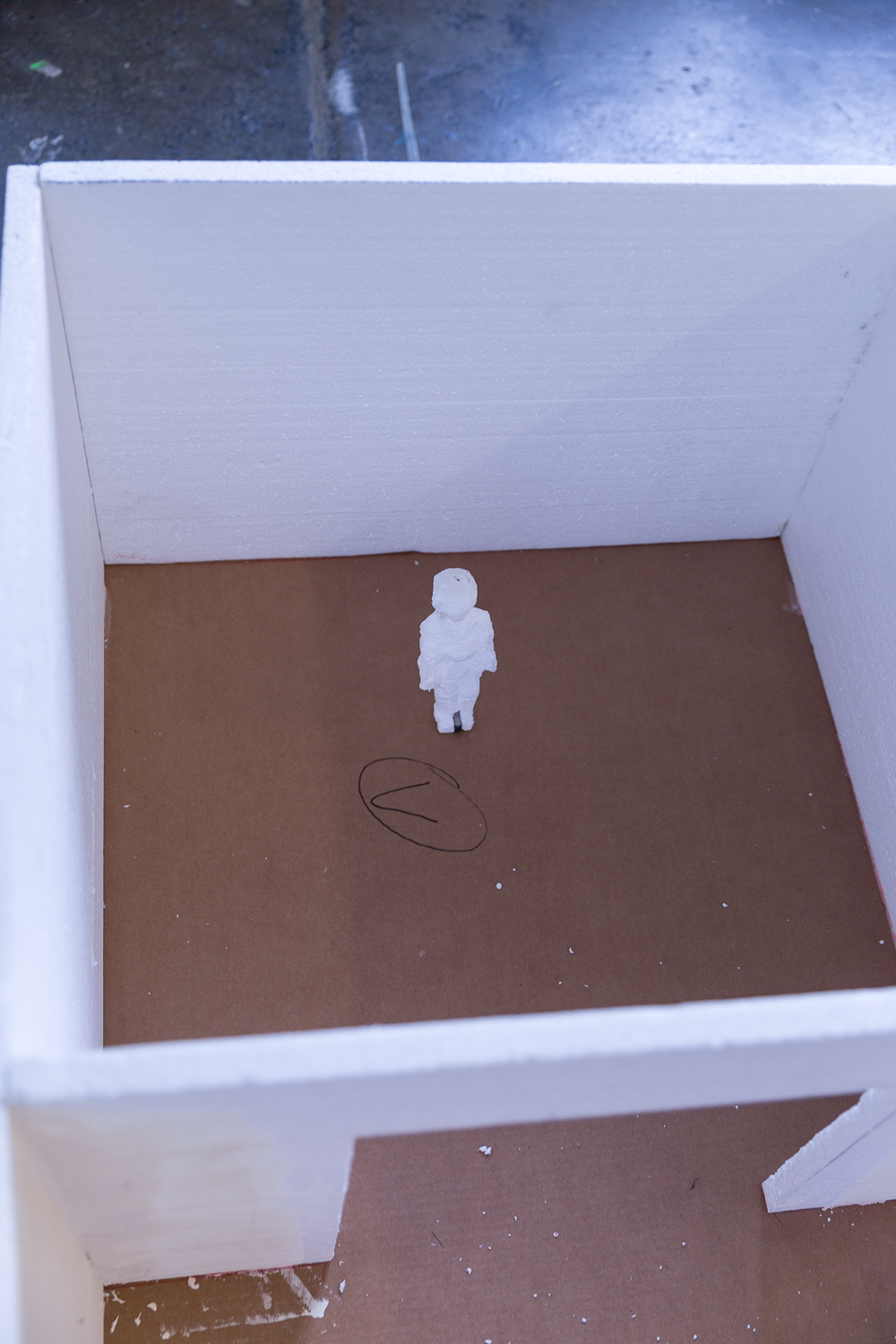Interview with Heiner Franzen
Heiner Franzen is known for weaving the cinematic uncanny into his practice, with exhibitions encompassing abstract line drawings, self-built architectural installations and eerie video loops. More recently, Franzen has integrated performance into his oeuvre as an extension of this overall interest in memory and repetition: drawings emerge as if of their own will, like dreamy apparitions from inside his textile installations or out of his projections. Franzen often builds rooms inside exhibition rooms, metaphorical caves where he produces his wall drawings in situ. For his exhibition “Kartenraum/Eidreh” at SMAC, Franzen will flesh out his interests in the psyche throughout the 3-tiered gallery space.
SMAC: Let’s talk about how you work in your studio and how you prepare for an exhibition.
Heiner Franzen: Generally, I make models - it’s better than a computer simulation, for me. Most of the time, I build my installations on site. I look at the shape of the space, do sketches and take photos. In the studio, I usually start with drawing, it’s the simplest way to begin. Then I switch to different media, hinged on what sticks out in the drawing. This might be a building, so I start to build; or it’s a sequence, so I start a video, and so on.
Does the drawing come organically or do you have a narrative in mind ahead of time?
There’s a narrative or a memory process that I deal with. It’s what’s in my head while I’m working. This could be a teenage situation, an argument, weird moments or a movie fragment, like when you walk out of a cinema and you have only one still in mind for days. When I deal with a certain image for longer than a few hours, I try to build something around it. I am interested in why I have selected this image, and not another. When I’m in the cinema I’m usually not interested in the whole plot of the movie, I see someone sitting or talking weirdly, or he has a strange ear. From this detail, I start to build the story.
There is an appealing image of your installations as mind projections or a cinema of the psyche. Can you tell us about how the architectural side of your works comes about?
Most of the things I do depend on where I stand, sit or move. Everything is a definition of space. I start in my studio, when I plan the exhibition. And finally I am in a dialogue with the recipient who walks through this thing and builds his own story. I don’t want something to be flat, like looking at a screen. It’s all about building a space in one's head that works like a hologram. By moving myself, I develop my drawings and everything else.
How do the collage aspects fit into your work?
The first collages I made were from film stills. This was like when you’re a teenager and you pass a cinema and look at the posters for films that you’re forbidden to watch. So you imagine what it could be like. My first little thumb cinemas came from these collages. It was a good way of dealing with my fantasies.
Your video “Twin” looks at a scene from Kubrick’s “The Shining” and you also have an interest in Pasolini.
Watching “The Shining” the first time I experienced one of these typical movie situations I mentioned. I saw the twin scene and realized I couldn’t divide the twins as two people: I always saw them as one. I looked at the stills I’d collected years after the first viewing and I sewed them together. Parallel to this process, I started the video loop. My aim was to make something more scary than the original scene.
You have an element of the surreal or horror in your work. For example, the very thin tunnel space you made at Museum Schloss Moyland a few years ago.
It started as a reference to the “Twin” collage and the loop, which were finished shortly before the tunnel in Moyland. Sometimes it’s important to give this conceptual link but in the end the object itself is more important to me.
Videomodell für Museum Schloss Moyland
Some of the characters in your drawings recur. What is the inspiration for these sketches? Are they autobiographical?
I think we remain in our personal narrative at any place. You sit in a dark cinema and you think this is your movie. While watching, you have your own projector working in your head. This inner episodic memory that is running the whole time also has its own repetitive pattern.
On the other hand, it’s only material. Psychoanalysis may drive you to solve riddles. As an artist I move from image to image, I don’t explain myself. It feels OK to display in this way and to have a language that I don’t want to translate.
Is there a natural connection between drawing, installation and video?
I try to make my videos as simple as when I draw a line. I’m not interested in the whole apparatus of cinema. I want to have a camera and to edit myself. The movement of the camera has to do with drawing, and when I set the projection, the positioning matters as well as the objects I eventually build for this set.
You did this performance “Kartenraum” in Wannsee, which was a live drawing session.
This was part of a collaboration with the director Paul Plamper, who did “The Acoustic Kleist Memorial”, an audio installation at Kleiner Wannsee, where Heinrich von Kleist shot Henriette Vogel and himself and where Kleist’s grave is. This was the site of their last walk around the lake, where they were witnessed as a happy, chatty couple before the shots.
Kleist famously wrote about the “gradual making of thoughts while talking”. Paul Plamper said that I seem to develop my drawing characters this way, so he asked me to contribute. I did a performance where only the appearance of the line could be seen. I placed a box made of colour-permeable fabric at the S-Bahn station and drew on it from the inside. Outside the box it was all about the passers-by fantasizing what would happen next.
Can you tell us a bit about your plans for the upcoming exhibition at SMAC?
Downstairs I’ll install a table video and a wall projection. The latter is a drawing video that refers to the “Kartenraum” performance in Wannsee. In the room above there’s a wall drawing done on chalkboard paint. It links to the characters that I am showing in the space below.
The funny thing about the space is that it is on three levels: the conscious, the unconscious and I don’t know… the loo, maybe? [laughs]













